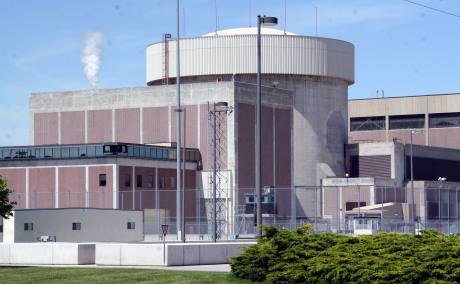Fort Calhoun closure confirmed
17 June 2016
Omaha Public Power District's (OPPD) board of directors has confirmed the Fort Calhoun nuclear power plant in Nebraska will close by the end of this year. The board said retirement of the single-unit pressurized water reactor is in the best financial interest of the district.
 |
| Fort Calhoun (Image: OPPD) |
The board decision follows a recommendation made by senior management in May based on a review of OPPD's resource planning under various future scenarios. The company said that extensive modelling conducted by a third party had found ceasing operations at Fort Calhoun and "rebalancing" OPPD's energy portfolio would result in savings of between $735 million and $994 million over the next 20 years.
Mike Mines, CEO of the publicly owned utility, said the decision had not been taken lightly. "The industry is changing and it is imperative that we make strategic decisions to better position the district in the future for all our 365,000 customer-owners," he said. "As tough as this decision is, we cannot afford to ignore the changes happening around us. We must look to the future."
OPPD cited market conditions, including historically low natural gas prices and lower energy consumption, as a major factor behind the board's decision. The utility also cited the failure of the USA's Clean Power Plan - the US Environmental Protection Agency's proposed program to reduce carbon dioxide emissions from power generation by 30% from 2005 levels by 2030 - to give existing nuclear power plants such as Fort Calhoun credit for their carbon-free generation.
The company also considered economies of scale. At 478 MWe (net), Fort Calhoun is the smallest operating nuclear unit in the USA in terms of its accredited capacity and unlike larger and multi-unit nuclear plants cannot spread costs over high levels of production.
OPPD serves a population of 810,000 people - more than any other electric utility in the state of Nebraska - ranks as the 12th largest public power utility in the USA in number of customers served. Fort Calhoun is one of three baseload plants supplying the majority of its power, alongside the North Omaha and Nebraska City coal-fired plants. Fort Calhoun provides about a third of OPPD's total generation.
Responding to the announcement, the US Nuclear Energy Institute (NEI) said closing Fort Calhoun would make it more difficult for Nebraska and the USA as a whole to meet clean-air and climate change commitments. "Fort Calhoun's closing will take about one-quarter of the state's clean electricity off the grid," NEI CEO Marvin Fertel said. "It will no longer prevent the emission of 3.4 million metric tons of carbon dioxide, the equivalent of putting 800,000 cars back on Nebraska's roads."
Fort Calhoun is the 12th reactor to close or be announced for premature closure in recent years, and Fertel called on US policymakers to act to ensure nuclear power plants are correctly valued for their benefits. "This is due in part because the full value of nuclear power plants is not recognized in the price of electricity. Leaders in state capitals and Washington must bring together policies that appropriately value all attributes of electricity generation, which if done correctly will preserve nuclear energy facilities as part of a diversified electricity portfolio. To do otherwise will result in significantly negative economic and environmental consequences for decades," he said.
Safestor chosen
OPPD said it will use the Safestor decommissioning option, a deferred dismantling strategy where residual radioactivity is allowed to naturally decay over a period of up to 60 years, after which the plant is dismantled. The company said this approach would provide both regulatory and financial flexibility.
It will cost an estimated $1.2 billion to decommission Fort Calhoun. OPPD had anticipated having full funding available for a 2033 decommissioning date, when the unit's current operating licence expires. As of the end of May, OPPD said it had about $388 million in total available decommissioning funds, but will add to the fund annually to allow for decommissioning ahead of 2033.
Fort Calhoun has been in commercial operation since September 1973 and the unit underwent extensive operating and safety systems upgrades during an extended outage between 2011 and 2013. The plant is owned and licensed to OPPD, and has been operated by Exelon since 2012. Closure of Fort Calhoun will leave the state of Nebraska with one operating nuclear power plant, Nebraska Public Power District's Cooper 768 MWe (net) boiling water reactor.
Researched and written
by World Nuclear News